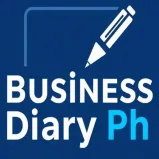
A key part of long-term business growth is keeping customers loyal. Loyal customers buy from you again, give you useful feedback, and promote your brand. There are a lot of things that can affect loyalty, but proactive communication is one of the most powerful. Companies can turn normal customer relationships into long-lasting partnerships based on trust and mutual benefit by anticipating needs and meeting them before they become problems.
Understanding the Psychology of Customer Expectations
Customer expectations change depending on past encounters with your company and knowledge of other businesses in different sectors. Modern consumers want individualized experiences catered to their particular tastes and past with your company more and more. With disappointment ensuing when reality falls short, the expectation gap is the discrepancy between what consumers expect and what they actually experience. By offering clarity, lowering ambiguity, and proving attentiveness, preemptive communication helps control these expectations. According to the psychological concept of reciprocity, consumers naturally feel inclined to repay through ongoing patronage and good word-of-mouth when companies offer surprising, pleasant interactions. Early identification of possible causes of conflict helps to build a reputation for outstanding service that distinguishes itself in the packed market of today.
Developing a Strategic Communication Framework
Good proactive outreach calls for methodical preparation rather than haphazard correspondence. Start by charting the whole customer journey from first discovery through purchase and continuous use, noting key points where proactive communication offers especially great value. Establish communication triggers depending on particular consumer behavior, time intervals, or outside events calling for interaction. Using an AI-powered virtual receptionist can assist in streamlining these interactions, allowing for faster response times to client concerns while still delivering a consistent and professional experience while staying adaptable. The cadence of the communication must be carefully balanced and frequent enough to show attention without invading or overwhelming. These methodologies turn reactive customer care into strategic customer success initiatives that foresee and meet demands before they show up for the client.
Leveraging Technology for Personalized Outreach
Scalable customization made possible by modern communication platforms once would have required impossible resources. The basis is customer relationship management systems, which centralize contact history and preference data, guiding focused outreach. Platforms for marketing automation provide planned messages set off by particular consumer actions or relationship benchmarks. By spotting trends in consumer comments that can point to future turnover risk, sentiment analysis tools enable intervention before official complaints ever start. Whether consumers interact via email, SMS, social media, or voice channels, multichannel orchestration guarantees consistent experiences. By means of consistent profiles created by the integration of the customer data platform, information silos between departments are eliminated, therefore assuring that every team member has full context during client interactions. These technical features help businesses to send the correct message via the appropriate channel at exactly the correct moment.
Creating Value Through Anticipatory Service
Rather than generic check-ins or subtly veiled sales efforts, the most successful proactive communication provides actual value. Educational materials that enable consumers to maximize product value show real concern for their success outside of the first transaction. Suggestions for use based on personal behavior patterns show sensitivity to particular needs without depending on client initiative. Alerts on proactive maintenance show dedication to continuous client experience and help prevent service interruptions. Strategic account reviews point out quantifiable results attained and point out areas for more value. Through usage pattern analysis and proactive management of possible difficulties before consumers encounter them, the predictive service model forecasts such problems. This strategy changes the basic character of the connection from reactive problem-solving to cooperative success planning, therefore forging much closer bonds than conventional customer service models can produce.
Measuring Impact and Refining Approaches
Using proactive communication techniques calls for constant evaluation and improvement to get the best results. Create transparent benchmarks connected to corporate goals such as net promoter scores, customer lifetime value, retention rates, and expansion income. To pinpoint the most effective strategies, track participation data for outreach efforts, including open rates, response patterns, and later purchase activity. By means of surveys and interviews, do frequent voice-of- consumer research to evaluate, from the customer’s standpoint, the perceived value of proactive touchpoints. Methodologically hone message content, timing, frequency, and channel choice using A/B testing techniques. These measuring techniques turn customer communication from a subjective art into a data-informed discipline that regularly improves company outcomes while strengthening customer relationships.
Conclusion
By means of proactive communication, developing client loyalty offers a strategic method of differentiating companies in ever-competitive marketplaces. Companies can change their customer connections in significant ways by knowing customer psychology, creating organized outreach plans, using suitable technology, giving anticipatory value, and always evaluating outcomes. Rather than isolating proactive communication inside customer service divisions, the most effective implementations include it all over the company.

